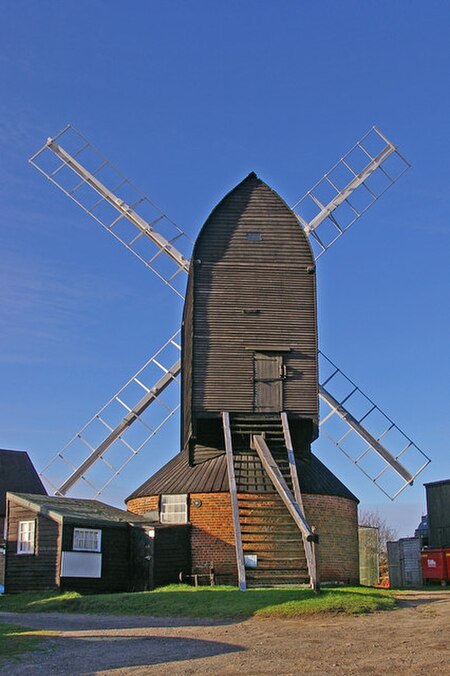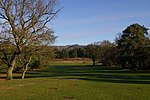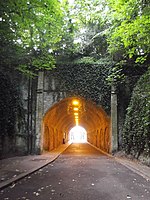Reigate ( RY-gate) is a town in Surrey, England, around 19 mi (31 km) south of central London. The settlement is recorded in Domesday Book in 1086 as Cherchefelle and first appears with its modern name in the 1190s. The earliest archaeological evidence for human activity is from the Paleolithic and Neolithic, and during the Roman period, tile making took place to the north east of the modern centre.
A motte-and-bailey castle was erected in Reigate in the late 11th or early 12th century. It was originally constructed of timber, but the curtain walls were rebuilt in stone about a century later. In the first half of the 13th century, an Augustinian priory was founded to the south of the modern town centre. The priory was closed during the Reformation and was rebuilt as a private residence for William Howard, the 1st Baron Howard of Effingham. The castle was abandoned around the same time and fell into disrepair.
During the medieval and early modern periods, Reigate was primarily an agricultural settlement. A weekly market began no later than 1279 and continued until 1895. Key crops included oatmeal, hops and flax, but there is no record of rye being grown in the local area. The economy initially declined in the 18th century, as new turnpike roads allowed cheaper goods made outside the town to become available, undercutting local producers. Following the arrival of the railways in the mid-19th century, Reigate began to expand and the sale of much of the priory estate in 1921 released further land for housebuilding.
Since 1974, Reigate has been one of four towns in the borough of Reigate and Banstead and is part of the London commuter belt. The borough council is based at the new town hall on Castlefield Road and Surrey County Council has its headquarters at Woodhatch Place. Much of the North Downs, to the north of Reigate, is owned by the National Trust, including Colley Hill, 722 feet (220 m) above ordnance datum (OD) and Reigate Hill 771 feet (235 m) above OD.









